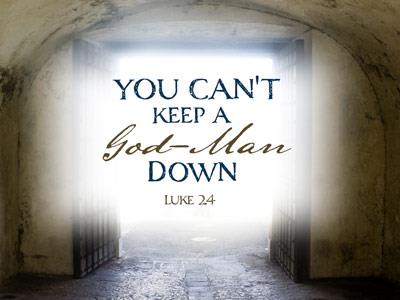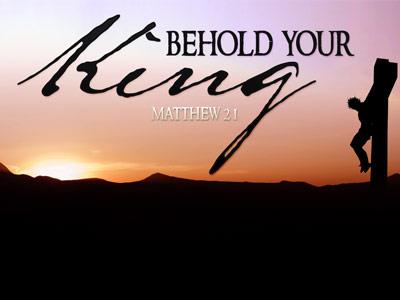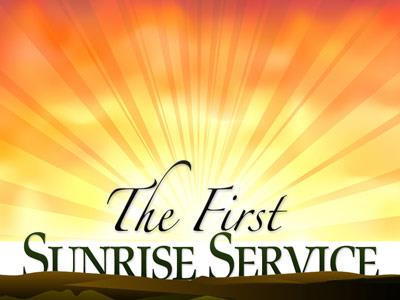-
Life After Death Easter 2021
Contributed by Amiri Hooker on Apr 5, 2021 (message contributor)
Summary: “Life After Death” “Our lives begin to end the day we become silent about things that matter.” –Martin Luther King Jr. (1929–68) Acts 10:34-43. The Message
Sermon:
The first Easter was a wrecked scene of dispirited disciples in the shadows of an insurrection. This year Easter falls on April 4, the anniversary of the death of Martin Luther King Jr. That early spring evening in 1968 was ten days before the Feast of the Resurrection. In 2021, the second Easter of the coronavirus pandemic, we celebrate Resurrection in the shadow of insurrection. Easter also called Resurrection Sunday or Pascha is one of the most important days in the Christian faith commemorating the resurrection of Jesus Christ from the dead.
The Easter Triduum or Paschal Triduum starts on the evening of Maundy Thursday with the last supper continuing through Good Friday and the crucifixion and burial of Jesus Christ into Holy Saturday and ending with prayers on the evening of Easter Sunday.
Acts 10 narrates a significant change in Peter’s own life but also a massive shift in the trajectory of the church’s mission in its earliest days.
For Luke, this moment is significant well beyond Peter’s life. This story of Life After Death is a powerful symbol of a promise enunciated from the beginning of Luke’s gospel and throughout Acts, a promise represented most powerfully in the resurrection of Jesus.
Without question, God’s spirit is moving. The only question is whether Peter, as well as the church, will sense the winds of change and follow God’s lead.
Peter’s speech is a monumental speech. His thesis is a brief but powerful theological insight: “I truly understand that God shows no partiality” (cf. Romans 2:11). God picks no favorites. Everybody has a right to live!
No matter our place of origin, the same God reaches out to us; the same gospel calls us home. Social boundaries and ethnic differences are no obstacle to the gospel. Such differences are not an issue or a problem for God’s church.
Life After Death! Jesus’ resurrection violates the natural order of life and death, contradicts expectations that the Messiah would bring a swift end to the political powers, and continually challenges us to examine our faith anew. For Peter, the implications of the resurrection include the shattering of social boundaries, for “he is Lord of all!”
Easter is that time of the year where the defining symbol of the Christian faith the cross is worn with special pride. It is found on clothing, hats, bumper stickers, jewelry, koozies and just about anything else. We’ve marketed the cross so well that we’ve completely disconnected it from its original context and meaning.
But for someone living in the first century the cross was a form of social control meant to utterly terrorize the population;
• To bend them to the power and will of Rome.
• To demand allegiance.
• To remind the Jews they had no power.
• To announce that In Rome’s eyes the oppressed. the poor. the different. were less than human.
Referring to the cross, the late James Cone wrote, “Unfortunately, during the course of 2,000 years of Christian history, this symbol of salvation has been detached from any reference to the ongoing suffering and oppression of human beings.” Indeed, the cross has lost much of its original meaning. It’s become a hollow and feel good trinket suitable for all occasions. It can be made in precious gold, adorned with diamonds or left tastefully rustic. It’s the perfect reminder that we’ll never need to suffer because Jesus suffered for us.
Sadly, in America there is another symbol that’s closer to the original feeling the cross would have produced, and one we especially we Black Southern Christians – should reflect on this Holy Week: the noose. The noose was used to terrorize blacks in the South primarily after the Civil War.
• It told blacks they were less than human.
• It reminded them to stay in their societal place and not to challenge the white system.
• It utterly terrorized blacks and galvanized a racist system all across the United States.
The Noose that was constructed this year of the National Mall.
It’s the same noose that Billie Holiday sang about in Strange Fruit:
Black bodies swinging in the southern breeze
Strange fruit hanging from the poplar trees
It’s the noose that brought together whites from near and far to celebrate the protection and proliferation of a white way of life. It’s the noose, the tree, the lynching tree or cross that provided amusement for those wanting to celebrate someone dying an excruciating death.
This Noose also left blacks to retreat to their spaces on the white margins for fear the lynching fever might spread to their homes and sprout new Crosses.
The cross and the Noose or the lynching tree were and are symbols of terror, instruments of torture and execution, reserved for slaves, criminals and insurrectionists the lowest of the low in society.

 Sermon Central
Sermon Central



